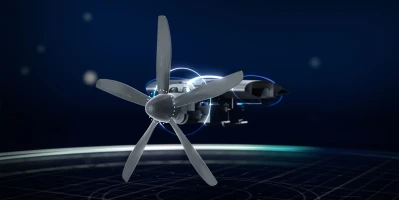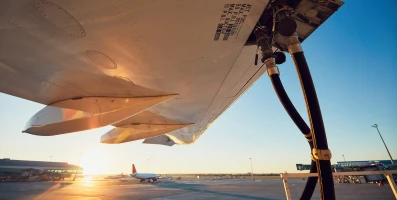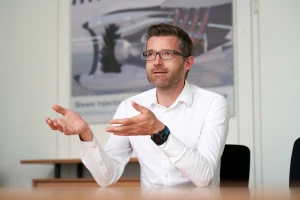aviation
Bird strike avoidance strategies
In aviation, colliding with one bird or part of a flock can have devastating consequences. Various strategies help to avoid damage.
author: Monika Weiner | 4 mins reading time published on: 01.07.2020
author:
Monika Weiner
has been working as a science journalist since 1985. A geology graduate, she is especially interested in new developments in research and technology, and in their impact on society.
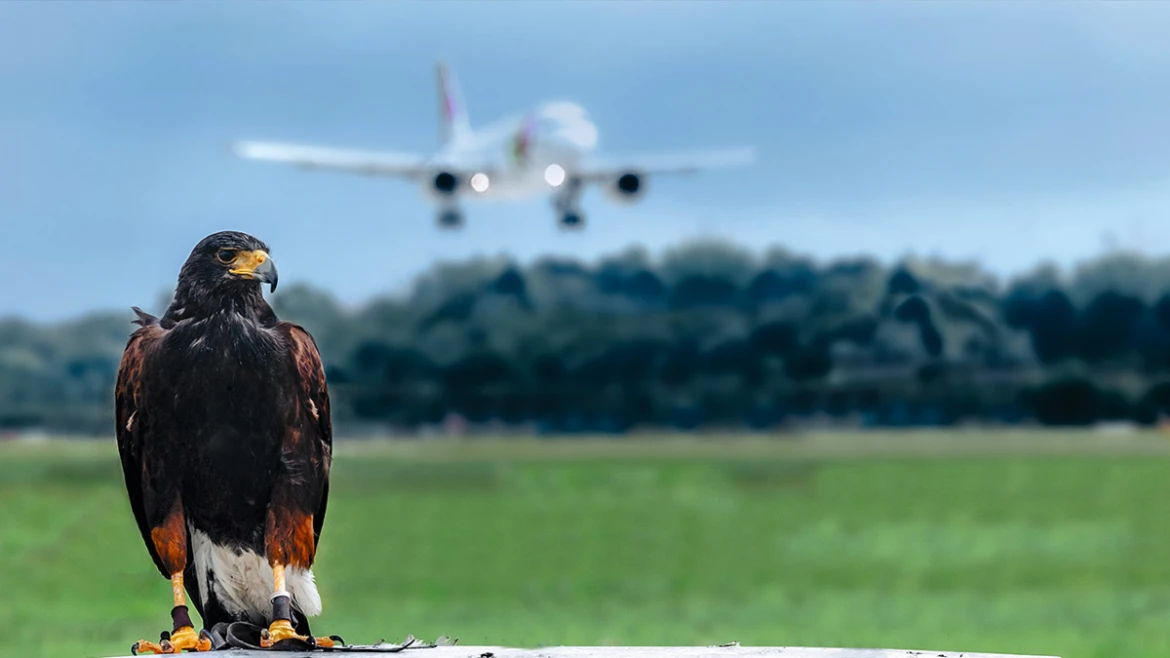
Collisions with birds, known as bird strikes, are often mild, but still cause some two billion U.S. dollars in damage each year. “In Germany alone, we see about 2,500 instances per year, affecting mostly engines, radomes, the wing leading edge and the landing gear,” reports Christian Hellberg, managing director of DAVVL e.V., a German association for biological flight safety. The association was established in the 1960s to draw up actions for preventing bird strikes. Members include all German commercial airports, airlines, but also aircraft manufacturers and pilot associations.
Takeoff and landing are the most dangerous times: at altitudes of up to 500 meters, aircraft find themselves sharing the airspace with their natural predecessors—and their feathered friends don’t stick to air traffic or statutory regulations. “Flocks of birds are the worst. They can cause serious damage. Airports near the sea, where there are geese and gulls, are at particular risk and continuous monitoring of the airspace is essential.” emphasizes Hellberg.
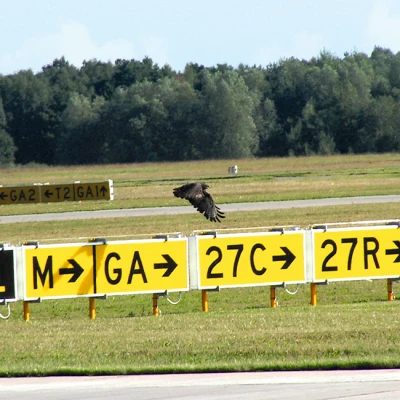



Natural enemies help prevent bird strikes: To help keep birds away from airports, operators often hire falconers who deploy specially trained birds of prey to hunt on the airport grounds.
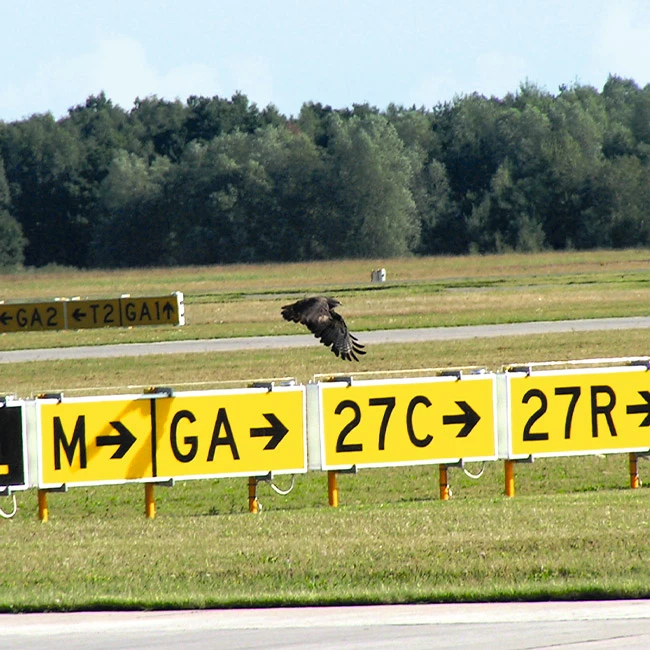
Natural enemies help prevent bird strikes: To help keep birds away from airports, operators often hire falconers who deploy specially trained birds of prey to hunt on the airport grounds.
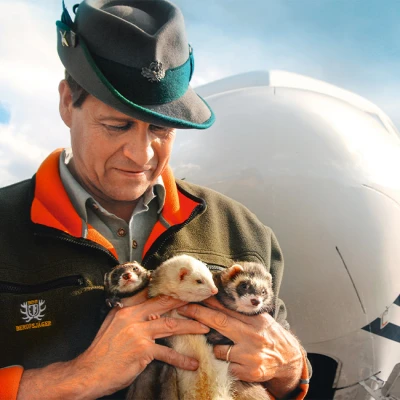



Preventing bird strikes on the ground: Mice and rabbit populations at the airport attract predators. Polecats help to hunt them out and drive them away.

Preventing bird strikes on the ground: Mice and rabbit populations at the airport attract predators. Polecats help to hunt them out and drive them away.




Artificial birds for safer airspace: A team of researchers at DLR has developed a bird dummy used to determine the loads that a collision with a bird would generate. Its physical properties are comparable to those of a real bird of the same mass.
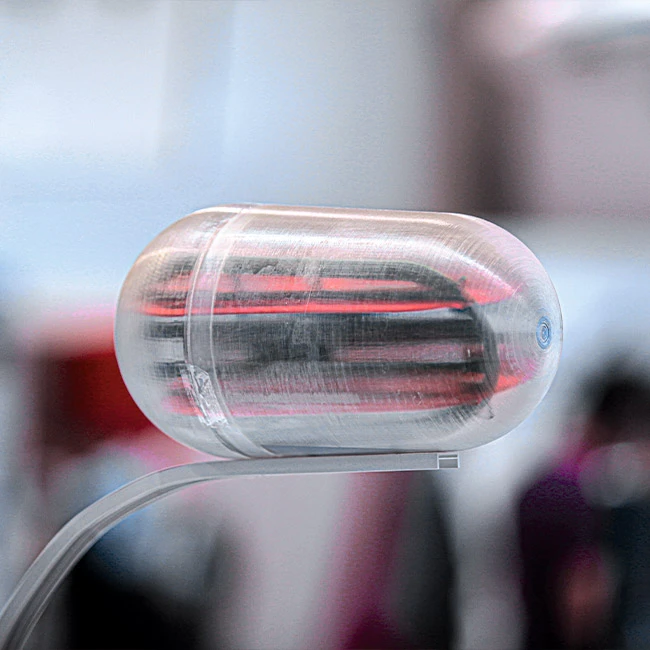
Artificial birds for safer airspace: A team of researchers at DLR has developed a bird dummy used to determine the loads that a collision with a bird would generate. Its physical properties are comparable to those of a real bird of the same mass.
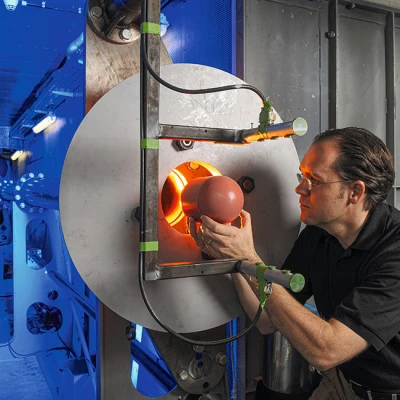



Investigating the impact: In the firing facility, a gas canon projects the bird dummy through the air at high velocities. This enables researchers to simulate a bird strike and investigate its impact on different aircraft parts.
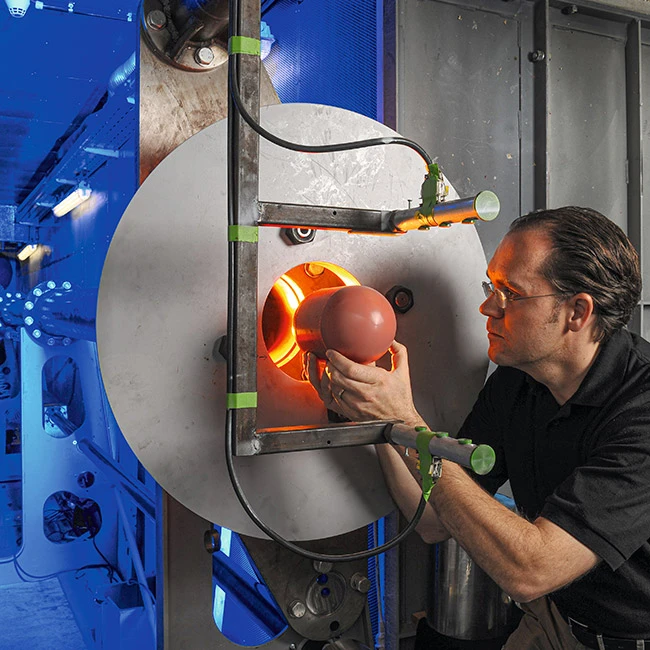
Investigating the impact: In the firing facility, a gas canon projects the bird dummy through the air at high velocities. This enables researchers to simulate a bird strike and investigate its impact on different aircraft parts.
To avoid collisions, all airports have their own bird strike and wildlife management officers who specialize in making the airport grounds less attractive for birds: plants that provide nourishment or serve as hiding places or places to nest and brooks and ponds are a no-go. Long-stemmed grasses are best suited as vegetation as small birds cannot alight there and birds of prey cannot hunt.
Another method used alongside “passive deterrence” by manipulating the ecosystem is monitoring: radar and IR cameras are used to detect larger birds or flocks. The information is gathered by the bird strike and wildlife management officers, who then, where necessary, send warnings to air traffic control and pilots.
In the event of an emergency, it is usually only a bird controller who can help. They use active deterrence methods to drive the birds out of the airspace above the airport. These measures range from scarecrows, pyrotechnics, lasers and oxyhydrogen explosions to regular visits by professional falconers who hunt the grounds with their falcons, buzzards and owls. Birdlike drones, Robirds, which are already in use at airports in the United Kingdom, the Netherlands and the United States, are not authorized in Germany—at least, not yet.
Hellberg reports that the various preventive measures taken in Germany have succeeded in reducing bird strikes—known as wildlife strikes—by 60 to 80 percent over the last 40 years, while the risk of serious damage to some bird species has risen, because the number of large birds such as geese, cranes, herons and cormorants has increased significantly in some cases. This is due to nature conservation measures and the clampdown on hunting in Europe.
“Our goal is to increase safety by using appropriate structures to prevent catastrophic damage. The components have to be designed in such a way that a bird strike does not result in them being destroyed but only deformed, while, at the same time, retaining their function so that the aircraft is able to continue to fly safely.”
Simulating emergency scenarios
The forces an aircraft has to withstand when it hits a bird weighing up to four kilograms during takeoff at several hundred kilometers per hour are enormous. “They are particularly difficult to calculate as, in aviation, we mainly expect constant, i.e. static, forces to occur during the flight. However, a collision with a bird produces a dynamic structural load that acts for only fractions of a second,” explains Dr. Nathalie Toso from the Institute of Structures and Design at the German Aerospace Center (DLR). Her team develops special computer models and verifies them based on experiments employing an artificial bird—a bird dummy. Using these models, the researchers can digitally simulate collisions at different flight speeds, collision angles and with different sizes of bird. The virtual test environment helps to design components that are particularly vulnerable to bird strikes—wing leading edges, cockpit windows, tail unit leading edge and landing gear—so that they can withstand the impact. “Our goal is to increase safety by using appropriate structures to prevent catastrophic damage. The components have to be designed in such a way that a bird strike does not result in them being destroyed but only deformed, while, at the same time, retaining their function so that the aircraft is able to continue to fly safely,” explains the head of department.
Ensuring the aircraft is still able to fly in an emergency situation is also of paramount importance for engine developers. To this end, engineers factor in an engine’s ability to withstand the high dynamic loads that occur in a bird strike right from the design phase.
Moment of truth on the test stand
Certification testing is the acid test for a new engine. Every new engine must pass the tests defined by the European Union Aviation Safety Agency (EASA) and the U.S. Federal Aviation Administration (FAA). An examiner is present while a bird strike is simulated on the test stand. An engine only passes the test if it still runs at at least 75 percent of its capacity following the impact and a defined recovery period, and if it successfully completes a subsequent test program. “The test criteria have been chosen in such a way that the aircraft can still land safely after a bird strike,” explains Volker Westphal, Head of Validation at MTU.



